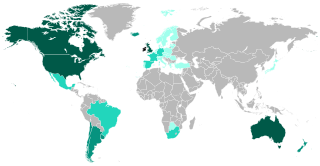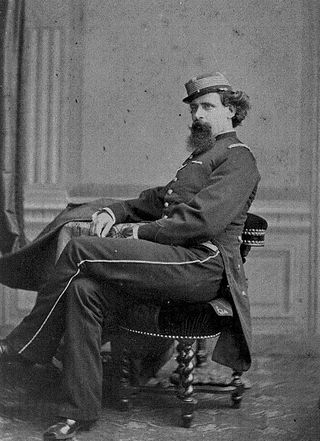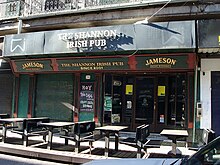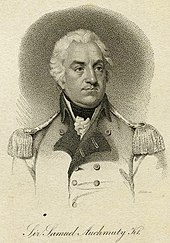
The Irish diaspora refers to ethnic Irish people and their descendants who live outside the island of Ireland.

Uruguay, officially the Oriental Republic of Uruguay, is a country in South America. It shares borders with Argentina to its west and southwest and Brazil to its north and northeast, while bordering the Río de la Plata to the south and the Atlantic Ocean to the southeast. It is part of the Southern Cone region of South America. Uruguay covers an area of approximately 176,215 square kilometres (68,037 sq mi) and has a population of around 3.4 million, of whom nearly 2 million live in the metropolitan area of its capital and largest city, Montevideo.
The history of Uruguay comprises different periods: the pre-Columbian time or early history, the Colonial Period (1516–1811), the Period of Nation-Building (1811–1830), and the history of Uruguay as an independent country (1830–present).

Farinata, farinata di ceci, torta di ceci, fainé, fainá, socca,cecìna or cade is a type of thin, unleavened pancake or crêpe made from chickpea flour.

Irish immigration to Puerto Rico began during the period of Spanish colonization of the island, continuing through 19th century to the present day. During the 16th century, many Irishmen, who were known as "Wild Geese", deserted from the English Army and joined the Spanish Army. They did so either in Europe or when they could "jump ship" off the coast of Puerto Rico, at which time they joined the Spanish colonial army, mainly in San Juan.
Isleños are the descendants of Canarian settlers and immigrants to present-day Louisiana, Puerto Rico, Texas, Cuba, the Dominican Republic, Venezuela, and other parts of the Americas. In these places, the name isleño was applied to the Canary Islanders to distinguish them from Spanish mainlanders known as "peninsulars". Formerly used for the general category of people, it now refers to the specific cultural identity of Canary Islanders or their descendants throughout Latin America and in Louisiana, where they are still called isleños. Another name for Canary Islander in English is "Canarian." In Spanish, an alternative is canario or isleño canario.
Nueva Helvecia is a city in Colonia Department of Uruguay.
Irish Argentines are Argentine citizens who are fully or partially of Irish descent. Irish emigrants from the Midlands, Wexford and many counties of Ireland arrived in Argentina mainly from 1830 to 1930, with the largest wave taking place in 1850–1870. The modern Irish-Argentine community is composed of some of their descendants, and the total number is estimated at between 500,000 and 1,000,000.

Argentina has a racially and ethnically diverse population. The territory of what today is Argentina was first inhabited by numerous indigenous peoples. The first white settlers came during the period of Spanish colonization, beginning in the 16th century. The Spaniards imported African slaves, who would go on to become the first Afro-Argentines. Following independence from Spain in the 19th century and well into the 20th century, numerous migration waves took place, with Argentina being the second most popular destination for migrants in the early 20th century, after the United States. Most of these migrants came from Europe.

Uruguayan tango is a rhythm that has its roots in the poor areas of Montevideo around 1880. Then it was extended to other areas and countries. As Borges said: "...tango is African-Montevidean [Uruguayan], tango has black curls in its roots..." He quoted Rossi, that sustained that "...tango, that argentine people call argentine tango, is the son of the Montevidean milonga and the grandson of the habanera. It was born in the San Felipe Academy [Montevideo], a Montevidean warehouse used for public dances, among gangsters and black people; then it emigrated to underworld areas of Buenos Aires and fooled around in Palermo's rooms..." This also implies that different forms of dance were originated in the neighborhoods of Montevideo, Uruguay in the last part of the 19th century and in the early 20th century that was particular from that area and different from Buenos Aires. It consists of a variety of styles that developed in different regions of Argentina and Uruguay.
British Latin Americans are Latin Americans of British ancestry.
Events from the year 1836 in Ireland.

Falkland Islanders derive from various origins. Earliest among these are the numerically small but internationally diverse early 19th century inhabitants of the Falkland Islands, comprising and descended in part from settlers brought by Luis Vernet, and English and American sealers; South American gauchos who settled in the 1840s and 1850s; and since the late 1830s, settlers largely from Britain with a minority from other European countries. There has also been significant recent contributions from Saint Helena and Chile.

Italian Uruguayans are Uruguayan-born citizens who are fully or partially of Italian descent, whose ancestors were Italians who emigrated to Uruguay during the Italian diaspora, or Italian-born people in Uruguay. Outside of Italy, Uruguay has one of the highest percentages of Italians in the world. It is estimated that about 44% of the total population of Uruguay are of Italian descent, corresponding to about 1,500,000 people, while there were around 90,000 Italian citizens in Uruguay.
Japanese Uruguayans are Uruguayan citizens of Japanese descent.
Irish Brazilians are Brazilian citizens of Irish ancestry, or Irish-born people residing in Brazil, and vice-versa. Many Irish immigrants to Brazil changed their surnames to resemble Portuguese names more closely, often losing the common prefix 'O'.

Lorenzo Latorre, full name Lorenzo Antonio Inocencio Latorre Jampen, was a Uruguayan officer and politician, who was a dictator and President of Uruguay from 10 March 1876 until 15 March 1880. During his rule political opponents were oppressed, but at the same time, his reforms greatly improved the economy and state institutions.

The Spanish diaspora consists of Spanish people and their descendants who emigrated from Spain. In the Americas, the term may refer to those of Spanish nationality living there; "Hispanic" is usually a more appropriate term to describe the general Spanish-speaking populations of the Americas together with those in Spain. The diaspora is concentrated in places that were part of the Spanish Empire. Countries with sizeable populations are Argentina, Bolivia, Chile, Colombia, Costa Rica, Cuba, Dominican Republic, Ecuador, El Salvador, Guatemala, Honduras, Mexico, Nicaragua, Panama, Paraguay, Peru, Uruguay, Venezuela, and, to a lesser extent, Brazil, Belize, Haiti, United States, Canada, the Philippines and the rest of Europe.

British Uruguayans are British nationals residing permanently in Uruguay or Uruguayan citizens claiming British heritage. Unlike other waves of immigration to Uruguay from Europe, British immigration to Uruguay has historically been small, especially when compared to the influxes of Spanish and Italian immigrants. Like their counterparts in Argentina, British immigrants tended to be skilled workers, ranchers, businessmen and bureaucrats rather than those escaping poverty in their homeland.

Spanish settlement in Uruguay, that is the arrival of Spanish emigrants in the country known today as Uruguay, took place firstly in the period before independence from Spain and again in large numbers during the late 19th and early 20th centuries. This includes that a large proportion of Uruguayans are of Spanish ancestral origin.













